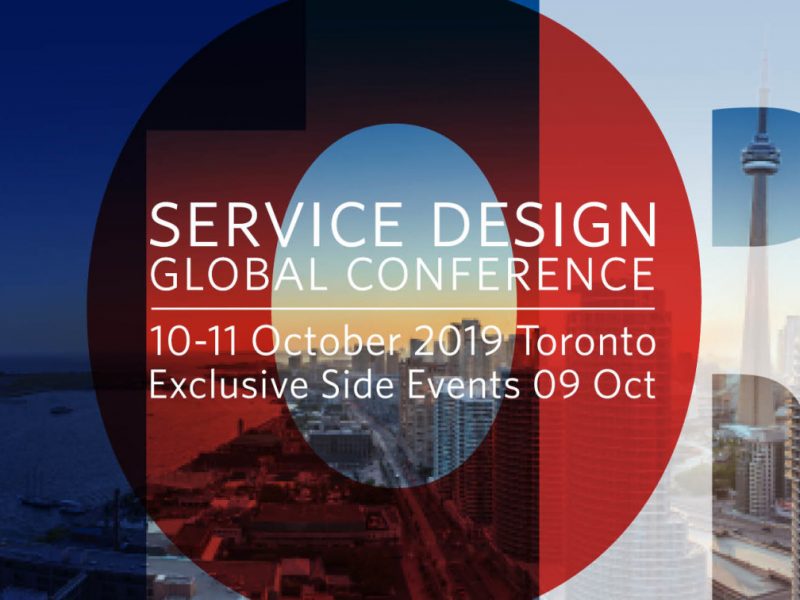
SDN Global Global Conference is Coming to Canada
As noted on the SDN website, #SDGC19 will be taking place October 10-11, 2019 in Toronto, with pre-conference activities taking place October 9.
This is significant to service design and design thinking professionals because the vast majority of Service Design Network events take place overseas, where the practice is more popular and common.
Toronto has developed a strong community in service design with the first national conference ‘InFlux’ held at the Rotman School of Design in 2016, where I had the opportunity to be a presenter. It was an excellent event followed by the ‘Impact’ conference in Montreal last year. This will be the first SDN Global Conference to come to the city.
Details of the Global Conference have not been released yet besides the dates, but early-bird ticket sales are expected to be announced soon. Be sure to mark your calendars.
If you are interested to stay up to date on SDN Canada updates, we recommend following a number of their social accounts, including Instagram and Twitter.
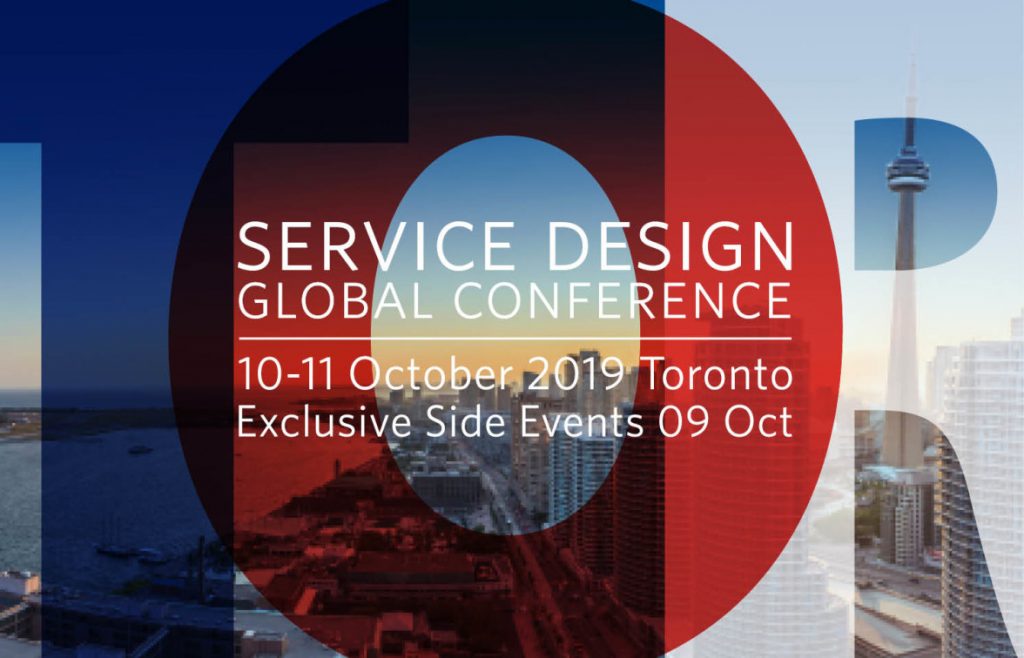

McKinskey confirms that design-led companies are more successful
In a recent report released by McKinsey from a five-year study of 300 companies, the global management consulting firm found that organizations that adopted design-based principles and methods had 32% more revenue and 56% higher total returns to shareholders compared with other companies.
Over those five years, McKinsey based their findings by looking at over 2 million pieces of financial data and 100,000 design actions. This is one of the most significant studies in this area and certainly validates and quantifies what many organizations and the design community have known for years.
It’s also important to note that these findings were consistent in what are often considered more complex or multi-faceted service organization and industries, including medical technology, consumer goods, and retail banking.
The study highlighted four different areas that increased revenue and total returns most, then ranked all 300 companies on these four areas using a metric they’re calling the McKinsey Design Index (MDI):
- Tracking design’s impact as a metric just as rigorously as you would track cost and revenue.
- Putting users first by actually talking to them. This helps to think outside of a standard user experience.
- Embedding designers in cross-functional teams and incentivizing top design talent.
- Encouraging research, early-stage prototyping, and iterating. Just because a product or service is launched doesn’t mean the design work ends.
This is a great start to validate the impact of design practices and thinking has on the bottom line. It’s also important that those leading or participating in design make the effort to provide similar information to the C-suite to demonstrate the value of the work we do.

A nice wrap up video highlighting components of a service blueprint
If you’ve been involved in user experience or researched some of its methods and best practices, then you’re probably well aware of Nielsen Norman Group. They’re a consulting agency best known for their research, reports and training highlighting what’s been proven to work in usability and showcasing examples of interfaces that utilize best practices and those that don’t.
As with most UX practitioners, they are making their way into the area of design thinking and have recently released the following video highlighting the key components of service blueprints, one of our favourite tools to use when designing great experiences, particularly in more complex service environments.
If you need to explain to a stakeholder group what a service blueprint is, this video might help. Adding to what NN/g is highligthing in the video, we’d also be sure to include ‘pain points’, ‘opportunities’ and even ‘platform’ or ‘system’ to ensure you can assess the efficiency of the service you’re delivering in a given environment.
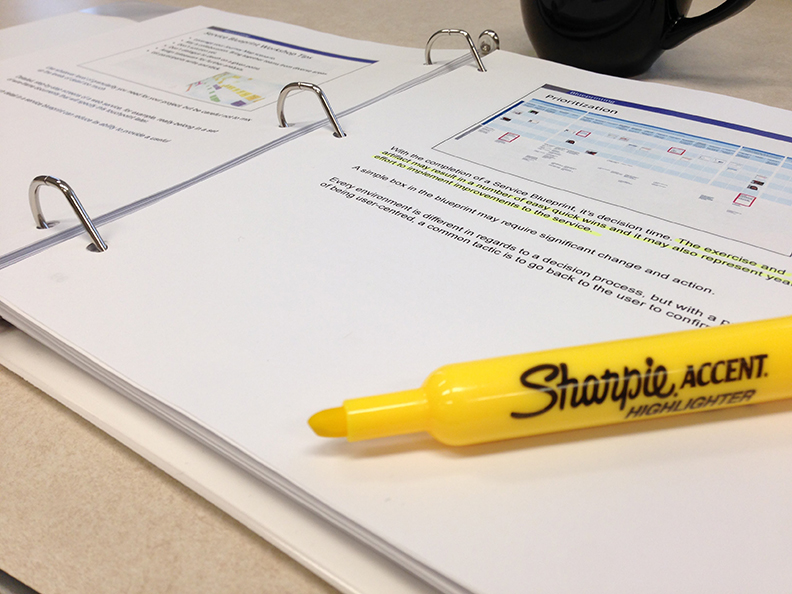
A wrap up of the Regina workshop ‘Creating Experiences with Service Design’
On March 14 and 15, we had the opportunity to work with some really smart and passionate people in talking about service design and the role it plays in delivering a great customer experience.
With workshop attendees representing government, finance, post-secondary institutions, IT, small business and more, there was a whole lot of great discussion, ideation and sharing to go along with the curriculum and activities that covered the two-day session.
Held at the new Fairfield Marriott in Regina, the workshop covered topics such as the importance of customer experience, the impact on businesses and the common challenges why organizations are having such a hard time moving the needle. From there, we moved into strategy, business model development and innovation, design research and understanding the needs and the world of your customer. We discussed and created a business model canvas, customer journey maps, personas, service blueprints and even went through a very condensed design sprint.
I don’t know if it’s the prairie water or the promise of spring, but we were so energized by the highly engaged, insightful and quick learning participants of the workshop. There was lively and astute discussion about the importance of change management, gaining buy-in for service design and the challenges organizations face in implementing new features, products or services to improve the overall customer experience.
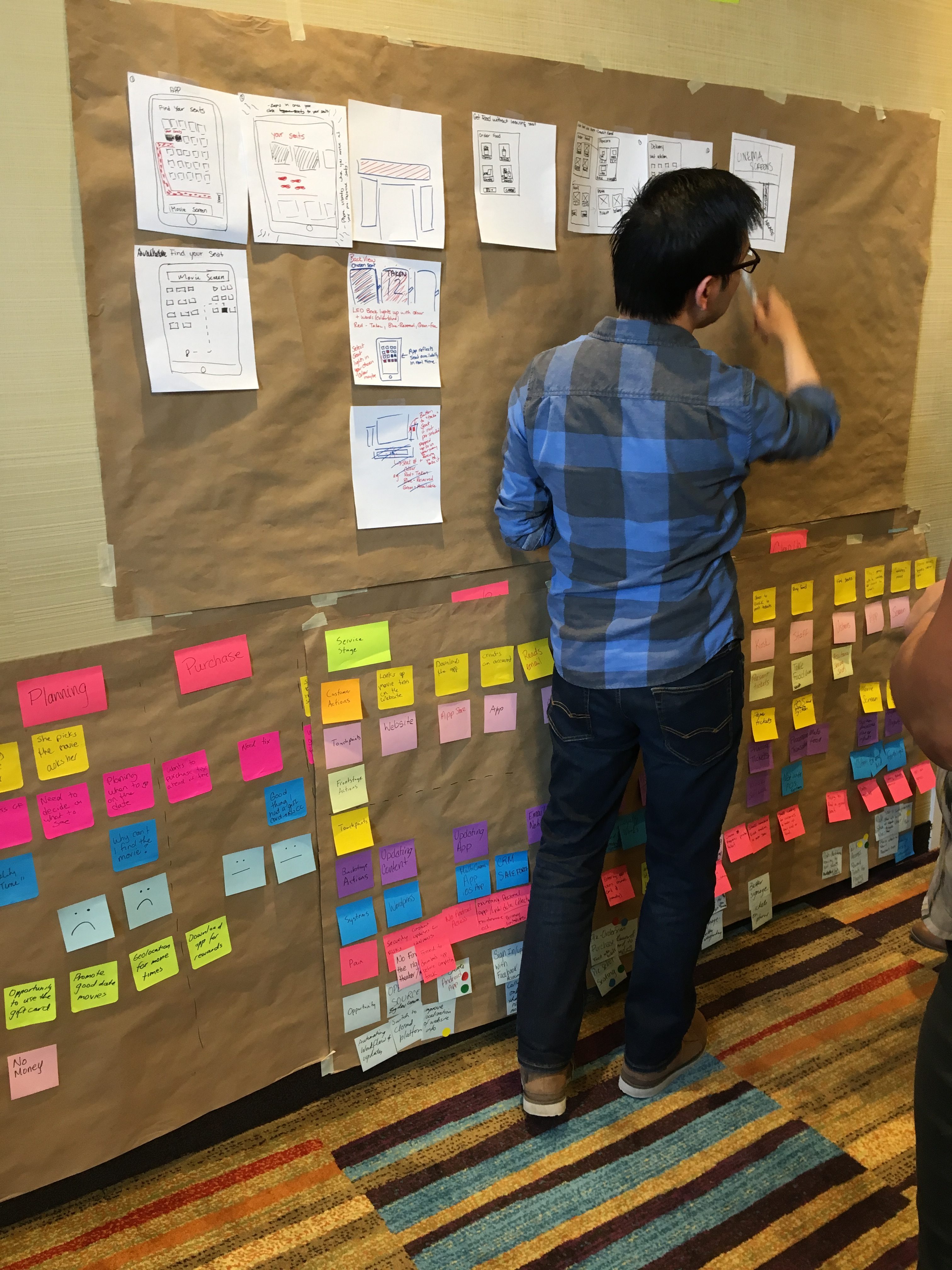
It was a great success, feedback was extremely positive and we are confident that there are consumers and stakeholders that will begin to realize better experiences with the organizations that were represented in the workshop.
– Jason

Tales from Canada’s first service design conference
On Thursday, December 1, I had the opportunity to speak at the very first service design conference in Canada. It was a fantastic event organized and hosted by the Canadian chapter of the Service Design Network and was held at the Rotman School of Management in downtown Toronto.
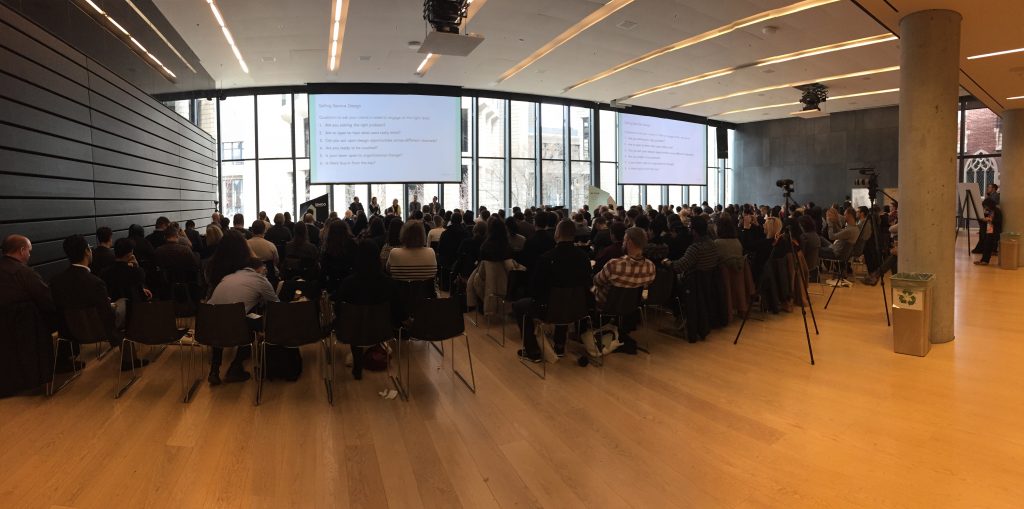
It was extremely impressive to see the strength of knowledge, experience and commitment to service design within the room. Attendees were varied in their application and role within the practice of service design. The event included speakers from newer startups such as Breather, the B.C. Department of Justice, Fidelity Labs, the City of Calgary, Bristol-Myers and a variety of agencies and consultancies.
Certainly a theme within the conference and and much of the dialogue surrounded ‘selling’ service design to leaders, decision makers, colleagues and other stakeholders. This is not surprising for a newer methodology such as service design that certainly disrupts the way organizations work and make decisions. In Canada, where the service design community isn’t as mature as other locations such as Europe, this is certainly a challenge we currently face.

The conference had two streams running, which included the larger theatre where attendees could hear talk and panels from a variety of practitioners as well as a workshop stream that allowed participants to take part in quick activities of just over an hour. The workshops were certainly popular and I expect will grow in size in future conferences.
My particular talk told the story about introducing service design in a corporate environment and provided tips on how others could successfully do the same. The response to my talk was very positive and found myself engaged with lots of people asking questions throughout the remainder of the day. Thankfully, my message and lessons learned seem to hit the mark for a lot of people.

It really was a world-class event and I was extremely impressed by the work by the SDN Canada chapter. At the end of the event, they’d mentioned that they would be taking the service design conference outside of Toronto and to a different location in Canada. I’m doubting it will find its way to Regina, but I look forward to the event as I’m sure they will ‘iterate’ from the ‘discovery’ of it’s inaugural event.
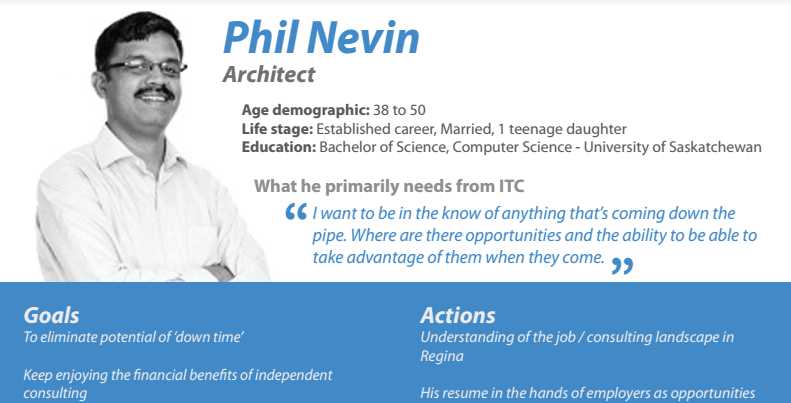
The role of personas in service design
The most successful organizations and brands are those that start with people when it comes to creating products or services that deliver great experiences.
Conceptually, that makes total sense but how do you tangibly put that concept into action? This is where personas come into play. Personas can be a powerful tool to create empathy for your service users with internal stakeholders and design teams as well as to ensure there is an understanding of nuances, behaviours and preferences of the people you are attempting to serve. Creating a great experience impacts the user’s emotions and it’s difficult to effectively design something impactful for a stat, segment or an ambiguous ‘user’. This is where personas can help.
Personas make thoughts, feelings, pain-points and needs more real for those designing something of value for people.
A persona is essentially a fictional representation of users of your service, typically developed based on design research such as interviews, surveys and other insights. Most often, there are often multiple personas of service users if there are key differences in preferences, behaviours, needs and objectives. The idea is to prioritize your personas based on whatever criteria makes sense to you. This allows you to either figure out how you can provide solutions to serve your diverse users based on their characteristics or to focus on those that are the top priority.
Personas commonly have names, images and narratives that make them more real and easy to recall. Often in our work, we find ourselves in a deep discussion about features or capabilities, “Well, this certainly wouldn’t be of value to Susan because she primarily relies on mobile for anything online.” Personas are almost a means to vet future state journeys based on what you know about people from your research and how to best make an impact.
So take the time to conduct both quantitative and qualitative research to paint a clear picture of the people who will use your service. Creating personas is both a mix of science and art, so be ready to get creative. Print and hang those personas in your meeting rooms or office to remind you of the emotions and successes that will make your experience stand out. Remember we’re designing for people and personas are a great way to keep that top of mind.

What is “Service Design”?
You know those brands.
Those that are the envy of their category. Those that have grown to an iconic or near cult-like status. Businesses that have created a rabid and loyal customer base. Brands that always seem to be able to launch the most successful offering, that deliver a seamless experience and that always leave their customers recommending them to friends or colleagues.
What’s most compelling is that these brands have multiple competitors offering the same options for customers and at the same price.
What sets them apart is Service Design.
Service Design is a multi-disciplinary practice and methodology that allows you to plan and provide valuable service experiences for your customers while ensuring you have the ability to effectively deliver those services in a sustainable way.
It makes certain that what your customers experience through your services sets you apart and that you have the systems, processes and capabilities to provide those services to realize positive business results.
In defining Service Design, Forrester Research states, “Like customer experience (CX), service design focuses on the design and implementation of interactions that happen across the entire customer journey. Service design also designs the behind-the-scenes activities that enable those experiences to be delivered as planned.” [1]
It’s what has helped build those iconic brands, including Nike, Starbucks, Disney and more. These are all companies that use Service Design.
It can be utilized for either an internal or an external user of services.
It looks at all interactions your customers experience across channels over the life of the service delivery – which is referred to as “front stage”. It also considers the internal elements impacted by the delivery of those experiences that the customer doesn’t see – referred to as “back stage”.
Front Stage = User experiences
Line of sight —————————————————————-
Back stage = Internal elements of service delivery
Service design is user-centred, meaning a critical component of the practice is discovery. Discovery of the needs of your customers, their pain points and opportunities to provide them value and the best experience possible. This includes tools such as stakeholder maps, personas, service safaris, customer journey mapping and more.
It’s also collaborative, both with the user of your services and across internal teams. This ensures more effective ideation and that ability to not only determine the right solutions to improve the experience but also to eliminate those ideas that won’t have the right impact or that can’t simply be delivered. Service Design is about designing with people and not just for them.
It relies heavily on evidencing, or the practice of visualizing ideas in terms of physical artifacts or prototypes that allow for testing with users and the ability to further define detailed requirements. This process alone can result in significant savings prior to unnecessary development.
Finally, it maps out current and future state experiences to identify areas of focus, allowing organizations a user-centred process to prioritize action and initiatives for further planning and execution, resulting in a clear strategic roadmap. Common tools include Service Blueprints or a Business Model Canvas.
Customer expectations are growing faster than most companies can meet. What’s important is that your business focus on what are the right experiences you can offer your customers and have a clear understanding what it will take to deliver them effectively.
This is where Service Design can help.
[1] Forrester Research, How Does Service Design Relate to CX?
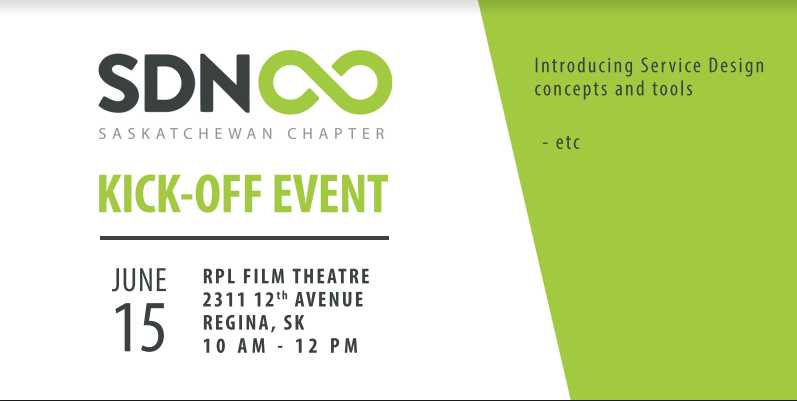
Tesani founders launch Service Design Network – Saskatchewan Chapter
If you haven’t guessed, we’re pretty passionate about service design. We believe in the impact it can have on delivering great experiences for people. It can help business find a competitive advantage and support public services and non-profits to serve people in the best way possible.
So Morgan and I along with our colleague Trent Haus have founded a Saskatchewan chapter for the Service Design Network (SDN). SDN looks to “connect people with like-minded passionate service designers from companies, agencies, universities and with curious innovators who embrace and apply this approach for the better of their organizations and for people.”
Our intent is to leverage this great network of people, resources, case studies and events to help promote the growth of service design in Saskatchewan.
We want people to understand, learn, advocate and improve their practice of service design within the province. We know we have passionate and talented people here and we want to see that grow. We believe SDN is a great vehicle for that.
So take the time to check out SDN. We recommend becoming a member. It has a wealth of information and support to help you provide great experiences, whether they’re internally or externally.
Also, be sure to follow SDN Saskatchewan on Twitter and on LinkedIn. This is the best way to stay up to date on the events and happenings of the chapter.

Why you’re approaching strategy the wrong way
If you provide a service using a number of different channels, you likely have developed a strategy for each of those touchpoints, whether it’s a mobile strategy, a social media strategy, a retail strategy, etc. The problem is that your customers don’t care about touchpoints. They care about your overall service experience and how it helps them make their lives better.
A stellar mobile app won’t create brand loyalty for the airline that offers a lousy service experience. Great selection in your store won’t be as valued if the purchase process is painful. The best approach to drive strategy is to start with the service experience. Make sure that the journey your customers experience when using your services is optimized from beginning to end, no matter the touchpoint they use.
The key is to plan and design the service experience and then create your channel strategies to support that experience so that each touchpoint makes the desired customer journey a reality. This way, you end up with a customer experience by design as opposed to one by default.
Service Design helps you identify the needs, pain points, opportunities and concepts to help you design the experiences your customers want. Gaining insights using tools like Journey Maps and planning end to end service experiences with Service Blueprints will allow you to identify how you can develop your various channels to add value to your customers and create advocates to build your brand and your business.
